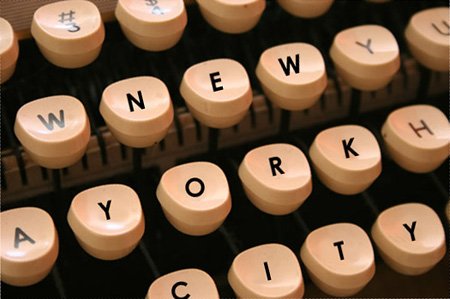Books like travel are about inward and outward journeys, and they can inspire you to visit new places. They can also help you rediscover familiar destinations. So instead of dreaming about the summer in South America or Australia, let these books about New York rekindle your passion for the city.
1. City of Glass: The Graphic Novel
Paul Auster writes in “City of Glass” that New York can be a labyrinth of infinite footsteps. Walking is often the best way to discover a place. And for many travelers, walking can also lead to introspection. But for Daniel Quinn, Paul Auster’s alter ego in the novel, walking is a form of escape that allows him to avoid thinking. Whether people walk through New York to get away from their lives or acquire a new perspective, the city is like a mystery that can be unraveled with each pushing step. Paul Karasik’s and David Mazzucchelli’s graphic novel adaptation of “City of Glass” will help you visualize the city from a walker’s perspective, and inspire you to explore New York on foot.
Where to visit: New York City may resemble a concrete maze, but it is up to us to find our own path. And while January may not be the most favorable month for a stroll, the Brooklyn Botanic Garden will offer you the necessary solitude to reconnect with yourself. Whether you walk past the conifers in the Rock Garden, or the blooming orchids and manukas in the Steinhardt Conservatory, each section will make you feel like you are being drawn on a journey. More importantly, the plants will reawaken your senses, and help you appreciate New York from a different perspective. The variety of tree bark colors and evergreen foliage will inspire you to relate everything you see, smell and touch with other memories of winter.
What is the character of New York? What makes it so compelling for tourists to visit? The idea that the city can be both an isolated place and a microcosm of the world explains its complicated reality. E.B. White writes in “Here is New York” that the city is a riddle of steel and stone, a compact arena that brings together all people and nations. His emblematic book divides the city into three New Yorks: the city of a man or woman that is born in New York and takes it for granted, the city of the commuter that devours New York everyday on route to his or her destination, and the city of a person that was born somewhere else and came to New York on a quest for something. The idea that New York is a final stop, an objective on many people’s itineraries still holds true 60 years after “Here is New York” was first published. This perspective will inspire you to re-explore the city and help you understand its complex character.
Where to visit: Perhaps the best way to discover New York is by penetrating deep into its bowels. E.B. White says that when an incision is made in the city’s pavement it exposes the ganglia of telephone cables, power lines, gas mains, steam and sewer pipes. But nothing will help you understand the magnitude of the city’s nervous system better than the Subway. The New York Transit Museum has rotating and permanent exhibits of photographs, maps, newspaper clippings and other historic artifacts, including its vintage collection of subway and elevated trains, and a working signal tower. Currently, the museum features a photograph exhibit of the Myrtle Avenue El, which ran until 1969 from downtown Brooklyn to Queens.
3. New York City: A Cultural History
So much of traveling is about asserting your own identity. It can give you a sense of perspective, but more importantly, it can help you discover your own story. Eric Homberger’s book “New York City” is a sophisticated cultural and literary companion that will teach you how to create your own narrative of the city. The book outlines New York’s development from a minor colonial port to a colossal global city that is full of superlatives. New York, he writes, has always been characterized by the biggest, richest, tallest, most diverse array of everything under the sun. But this unrelenting drive to grow in size, wealth, and population could also bring the city to the brink of destruction. He warns the reader that if the city stops it dies, drawing a close parallel with the French Foreign Legion, where New Yorkers are forced to either march or perish.
Where to visit: No story about New York is complete without an extensive chapter on immigration. Homberger writes that with each new wave of immigrants the city reinvents itself. And no place is more emblematic of this reinvention than Ellis Island. For many New Yorkers, the modern renaissance building of the Ellis Island Museum looks like a defunct amusement park or an obsolete railroad station. But Ellis Island is much more than a museum or a mausoleum for fragments of immigrant life. It is a starting point where you can discover your family’s genealogy. A database of immigration records, passenger lists, and ships’ manifests from 1892-1924 is available onsite and online, and the history center will provide you with useful tips to learning more about your ancestry. The museum itself will give you a sense of what the building was like when it served as a hospital, hotel, prison and transportation hub for hundreds of immigrants each day.
4. The World in a City: Traveling the Globe Through the Neighborhoods of the New New York
Don’t confine yourself to meeting friends and family at the same old watering holes, restaurants and shops in Manhattan. Joseph Berger’s book “The World in a City” will show you a cosmopolitan New York that is more diverse than the Casablanca and the Shanghai of the silver screen. The whole world, he claims, can be found in the city for the cost of a MetroCard, and Mr. Berger’s book will give you an in-depth look at the checkerboard neighborhoods that have been carved out by diverse cultures and ethnicities. You will get a sample of the Middle East at the Al-Iman Mosque (24-30 Steinway St.) in Astoria, dine at a Colombian rotisserie (Pollos a la Brasa Mario, 83-02 37th Ave.) in Jackson Heights, buy a wide-rimmed fedora at a Jewish Orthodox hat-shop (Hat-Dashery Shop, 1419 Coney Island Ave.) in Midwood, and admire remarkable art deco buildings in Grand Concourse. By the end of this book you’ll feel like you’ve traveled to the most exotic destinations without ever leaving New York.
Where to visit: Most immigrants see New York through a double optic, one that is distinctly American, and the other that is from their homeland. That is why when you visit a neighborhood like Brighton Beach you can feel very much in Brooklyn and on a coastal city in the Black Sea. This ex-Soviet community is known for its reliable fish-shops and international food stores that carry a premium selection of smoked and marinated herrings, imported caviar and black breads. They are also known for their Russian and Ukrainian restaurants where you can sample their finest beetroot soup (borscht,) and their ballrooms where young and older couples jive to Duke Ellington or spin to the rumba. But nothing is more emblematic than their love of fur. During the winter, it is not uncommon to find elegant women strolling beneath the elevated B & Q subway lines on Brighton Beach Avenue with their finest mink, muskrat or beaver coats. And with high-end designers like Versace, Jean-Paul Gaultier, Dolce & Gabbana and Louis Vuitton making fur fashionable on the runways again, fur stores on Brighton Beach Avenue like Classic Furs can offer you a good coat for a better price.










 Sarah Knapp is a Brooklyn based entrepreneur whose love for the outdoors and community building led her to the October 2013 creation of OutdoorFest. She has a BA in History, is a Wilderness First Responder and a NY state hiking, camp and boating guide. Her proudest achievement to date is reading the Aeneid in Latin.
Sarah Knapp is a Brooklyn based entrepreneur whose love for the outdoors and community building led her to the October 2013 creation of OutdoorFest. She has a BA in History, is a Wilderness First Responder and a NY state hiking, camp and boating guide. Her proudest achievement to date is reading the Aeneid in Latin.  Allison was one of our first top writers and Chief Editor but is no longer working with offMetro. Allison is a native New Yorker, who has lived in Rome, Tuscany, Melbourne, Toronto and Los Angeles. She frequently contributed travel pieces to Family Travel Forum, using her own children as guinea pigs as they travel the globe. She never missed a chance to sample local delicacies, as her love for travel goes hand-in-hand with her love for food and wine.
Allison was one of our first top writers and Chief Editor but is no longer working with offMetro. Allison is a native New Yorker, who has lived in Rome, Tuscany, Melbourne, Toronto and Los Angeles. She frequently contributed travel pieces to Family Travel Forum, using her own children as guinea pigs as they travel the globe. She never missed a chance to sample local delicacies, as her love for travel goes hand-in-hand with her love for food and wine.  Josh Laskin is a freelance travel writer and photographer based in the White Mountains of New Hampshire. When he is not at work or on the road, you can find him in the mountains snowboarding, climbing, hiking, fly fishing, mountain biking, and eating bagel bites.
Josh Laskin is a freelance travel writer and photographer based in the White Mountains of New Hampshire. When he is not at work or on the road, you can find him in the mountains snowboarding, climbing, hiking, fly fishing, mountain biking, and eating bagel bites. Annie is a travel writer, environmentalist, and surfer based in Venice, CA. She heads up our West Coast team, keeps our grammatical errors in check, and makes sure our California writers always have a plan for their next adventure. Follow Annie’s travels @annelisemcb.
Annie is a travel writer, environmentalist, and surfer based in Venice, CA. She heads up our West Coast team, keeps our grammatical errors in check, and makes sure our California writers always have a plan for their next adventure. Follow Annie’s travels @annelisemcb. Carly Pifer is a freelance writer who has been known to follow whims inspired by romantic movie scenes or colorful street style shots to India, Japan, Tunisia and Argentina. After stints living in Seoul, Boston, Paris and Los Angeles, writing and searching for something intangible, she landed somewhat steadily in Brooklyn and has begun to find inspiration in her more immediate surroundings.
Carly Pifer is a freelance writer who has been known to follow whims inspired by romantic movie scenes or colorful street style shots to India, Japan, Tunisia and Argentina. After stints living in Seoul, Boston, Paris and Los Angeles, writing and searching for something intangible, she landed somewhat steadily in Brooklyn and has begun to find inspiration in her more immediate surroundings.  Kate E. O’Hara is a New York based freelance writer and photographer who loves all things food—especially the people who make it and market it. Her writing aims to capture the essence of the food experience; the stories that go well beyond a plate of ingredients. In addition to her love of food, Kate is also known to have a hankering for red wine and craft beer. You can also find Kate on Instagram
Kate E. O’Hara is a New York based freelance writer and photographer who loves all things food—especially the people who make it and market it. Her writing aims to capture the essence of the food experience; the stories that go well beyond a plate of ingredients. In addition to her love of food, Kate is also known to have a hankering for red wine and craft beer. You can also find Kate on Instagram